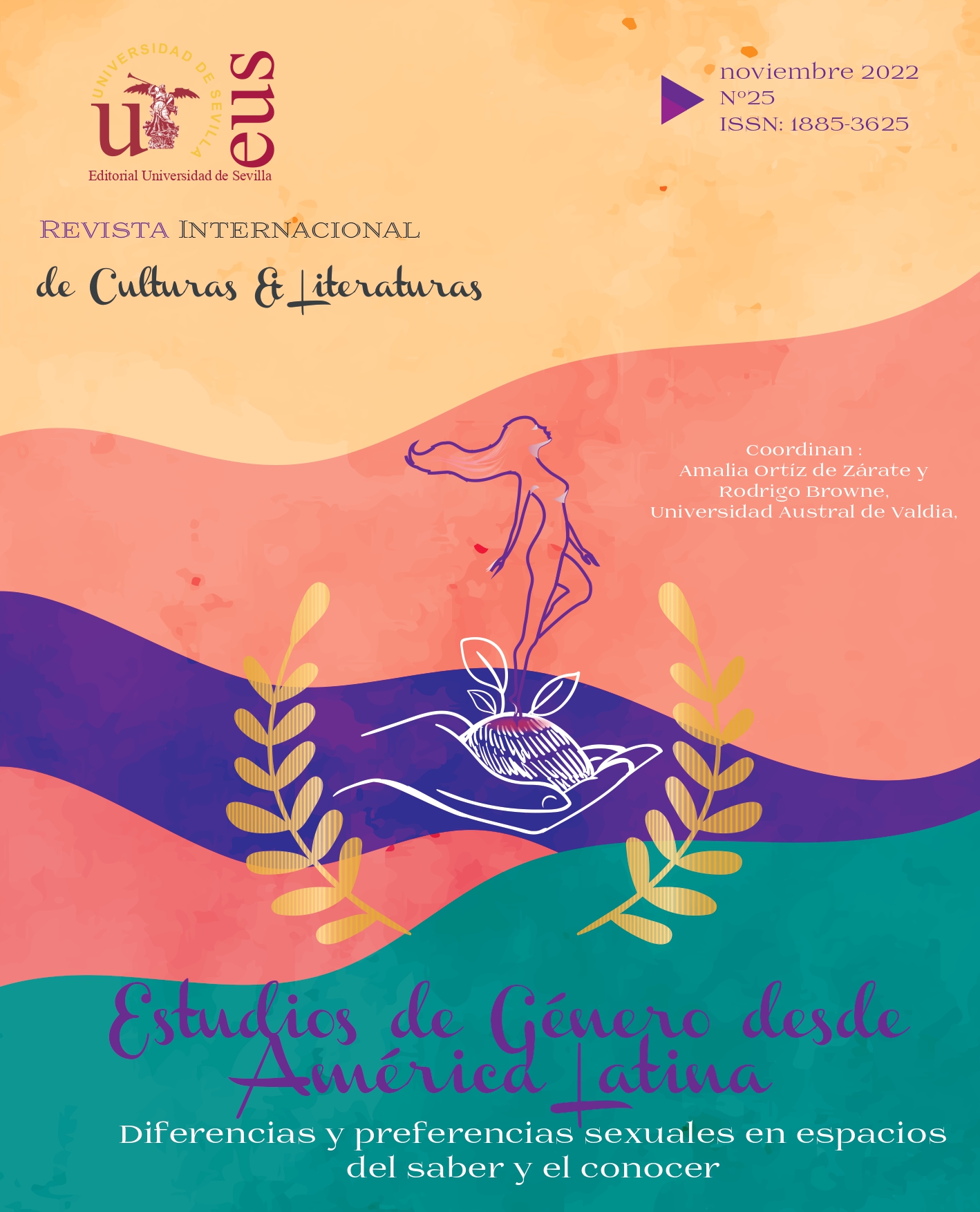Darning the body: femininity, frayed and sewing in Ramona Montiel, by Antonio Berni
DOI:
https://doi.org/10.12795/RICL2022.i25.04Keywords:
Sewing, Women, Body, Antonio BerniAbstract
This article explores the link between body and sewing in Ramona Montiel, a character developed by the Argentine artist Antonio Berni since the 1970´s. Through the incorporation of fabrics, lace or trimmings in the molding blocks, his xilocollages narrate the story of a seamstress who -despite her efforts and faced with the misery of the trade- incurs in prostitution to survive. The particularity lies in the fact that -as part of a plastic exercise inherent to the avant-garde- these remains would correspond to textile productions made by anonymous women and silenced by the hegemonic discourse, thanks to the decoding of widely spread patterns for the modeling of the female role in both angel of the home, reproducer and guardian of certain traditional values.
However -by being placed in the work- those scraps and fabrics un/dress the body of the prostitute, generating a dislocation between the private space of embroidery and the public space of dishonor; through the eroticization of Montiel and the invisibility of real women: the one who embroiders. In this sense, the pose, the curtain, the quilts would place us before certain possibilities of being/doing feminine that are historically and socially conditioned; considering the incursion of Berni himself as a clandestine photographer in the brothels of Pichincha, Rosario; from 1933.
Downloads
References
AMIGO, Roberto (2010) “El hurón: Una lectura tendenciosa de algunas obras de los treinta”. En: Cristina Rossi (comp). Antonio Berni. Lecturas en tiempo presente (pp. 17 – 30) Argentina: Ediciones Eduntref.
BARRIO, Néstor y MARTE Fernando (2010) “Estudio material de la obra “Chacareros”, de Antonio Berni. Problemáticas de un soporte atípico”. Ge conservación/ conservação 1, pp. 235 - 257.
GARCÍA, Fernando (2021). Los ojos. Vida y pasión de Antonio Berni. Argentina: Paidós.
GIUNTA, Andrea (2014). “Ramona vive su vida”. En: H. Olea y M. C Ramírez. Antonio Berni. Juanito y Ramona. (pp- 69 – 81) Argentina: Fundación Eduardo F. Constantini.
MONTALVA, Pía (2013). Tejidos blandos. Indumentaria y violencia política en Chile, 1973 – 1990. Chile: Fondo de Cultura Económica.
PACHECO, Marcelo E (2014) “Juanito Laguna y Ramona Montiel. Dos invenciones extinguidas”. En: H. Olea y M. C Ramírez (eds.), Antonio Berni. Juanito y Ramona. (pp. 21 – 29) Argentina: Fundación Eduardo F. Constantini.
PARKER, Rozsika y POLLOCK, Griselda (2021). Maestras antiguas. Mujeres, arte e ideología. España: Akal, Arte y estética.
PERROT, Michelle (2009). Mi historia de las mujeres. Argentina: Fondo de Cultura Económica.
STALLYBRASS, Peter (2008) O casaco de Marx. Roupas, memória, dor. Brasil: Autêntica editora Ltda.
Museo de Arte Latinoamericano de Buenos Aires, MALBA (Sin fecha) Antonio Berni. Juanito y Ramona 31. 10. 2014 – 01. 03. 2015. Recuperado de: https://www.malba.org.ar/evento/antonio-berni-juanito-y-ramona/ [Fecha de consulta: 16/ 08/ 2022].
Museo Malba (28/ 11/ 2014) Antonio Berni – La historia de Juanito Laguna. [Cápsula] Recuperado de: https://www.youtube.com/watch?v=m9deXF8viyw [Fecha de consulta: 16/ 08/ 2022].
Museo Malba (24/ 10/ 2021) Silvia Dolinko – La revolución de Berni en el grabado y las artes gráficas. [Cápsula] Recuperado de: https://www.youtube.com/watch?v=xBC6X-X3kGA [Fecha de consulta: 16/ 08/ 2022].

